
views
Considering Whether to Shave Your Cat
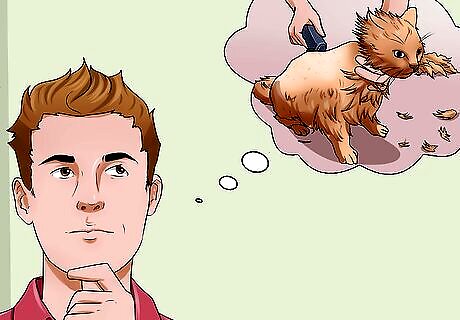
Decide whether you should shave your cat. When your cat's hair is matted, shaving him is an option. Severe matting can cause discoloration and scarring on your cat's skin. Afterwards, put your cat on a regular grooming schedule. Other reasons for shaving your cat include cat allergies, hairballs, dirty bottoms, and excessive shedding. In these cases, you can reduce the fur's thickness by thinning it. Generally, it is best to avoid unneeded shaving. Your cat’s coat is designed to keep him cool in the summer and warm during the winter. If you shave too much of your cat’s hair, you will interfere with your cat’s temperature regulation. If you have a long-haired cat, consider brushing her to keep her cool instead. Not all cats should be shaved. Highly aggressive, elderly, or ill cats can become stressed or nicked during shaving.

Consider visiting a pet groomer. Check local prices and locations. Pet groomers are trained to treat your pet’s hair. Although it is more expensive than shaving your cat at home, it might be worth it. Groomers are less likely to accidentally nick your cat. They also know how to keep pets calm during the grooming process. Prices vary depending on what service you need. If you want basic grooming (rather than a full shave), the cost will be lower. Cats have thin and delicate skin that you can easily cut with clippers, so it's best for professionals to shave them.
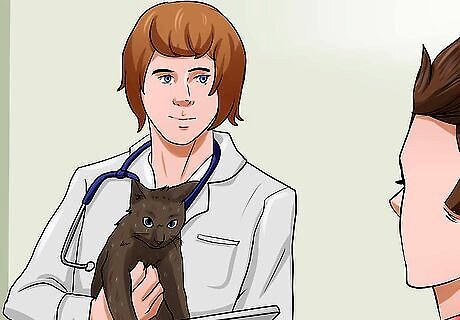
Check with your veterinarian. To be safe, check with your vet before shaving your cat. If your cat’s fur has a tangle, your vet might prefer to remove it herself. Additionally, your vet might advise you not to shave your cat or to only do it during certain seasons. She also might have recommendations for groomers or tools.
Preparing to Shave Your Cat

Gather needed supplies. If you decide to shave your cat at home, being prepared will make the process easier. Collect rubber gloves (to prevent scratching), towels, a brush, treats, appropriate clippers, and a #10 blade.You can purchase a pet hair clipper from your local pet store or online. Be sure to purchase a tool designed for small animals rather than for humans. Do not use a razor blade.

Find a partner. Shaving your cat on your own would be very difficult. It is best to find someone who can hold the cat while you shave your pet. Try to find someone who already knows your cat, like your partner, child, or close neighbor. Your cat will trust these people more than a stranger. Train your cat to associate grooming with positive things like petting and rewards. Show her the tools you will use and then give her a treat, praise or pet her. When starting a grooming session, have your helper pet the cat first on the grooming table so that your cat becomes calm. After your cat is purring, have your helper gently hold the cat in place with two hands. There might be moments, like when you are working in the tail area, when your helper will need to hold the cat in her arms.

Pick a location. Decide where you want to shave your cat. There likely will be hair all over, so keep that in mind. Aim for a site with tile or wood flooring rather than carpet. A kitchen or bathroom would work well. Shaving your cat in a familiar environment can help keep your cat calm. Find a table that you can use where you can place your cat. Pick a table that you don't mind accidentally being scratched or made dirty.
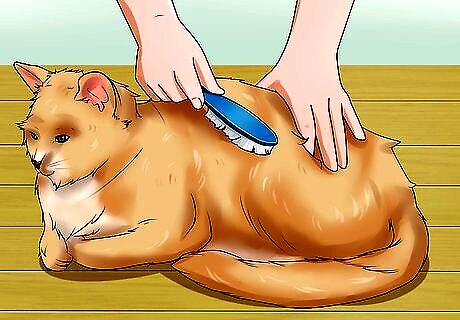
Brush your cat. It is a good idea to clean your cat’s hair before shaving her. Brushing your cat’s hair will remove dirt, spread natural oils throughout her coat, prevent tangles, and keep her skin clean and irritant-free. If your cat has short hair, you only need to brush her once a week. If she has long hair, you should brush her every week. To brush your cat, follow these steps: Use a metal comb. Comb her fur from head to tail. Start with her belly and legs. Be gentle near her chest and belly areas. Untangle any knots. Use a bristle or rubber brush to remove dead and loose hair. Brush her in an upward motion. Brush her tail by parting it down the middle and brushing the fur to either side.

Choose a grooming style. There are multiple ways to shave your cat. It is best to have a plan in mind before beginning to shave your cat. Consider the reasons (e.g. hygiene, age, hair length, etc.) for shaving your cat before choosing a style. The sanitary or hygiene cut frees the anus area for easier cleaning. The belly shave removes hair on the belly where matting often occurs. The comb cut removes some but not all hair and essentially thins the hair. It is effective for reducing shedding. A popular grooming style that reduces shedding is the lion cut. With the lion cut, your cat retains hair on her face but loses the rest of her hair.
Following General Shaving Guidelines
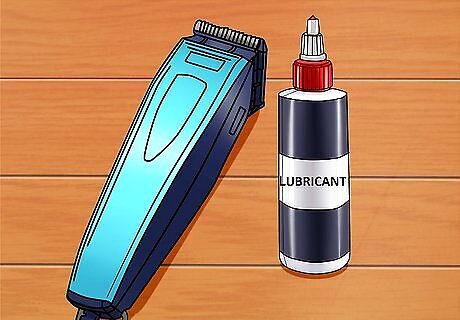
Keep your clippers cool. Make sure you do not shave your cat for too long with electric clippers. They will get hot. Take frequent breaks to let them cool. Your cat's skin is very sensitive, which is another reason to watch the heat of the clippers. Consider using lubricant to aid shaving.

Pull the skin taut. When shaving your cat, be sure to stretch the skin enough so you do not nick your cat. Be sure you have calmed your cat sufficiently before trying this step. Having another person to help with this step is also a good idea.
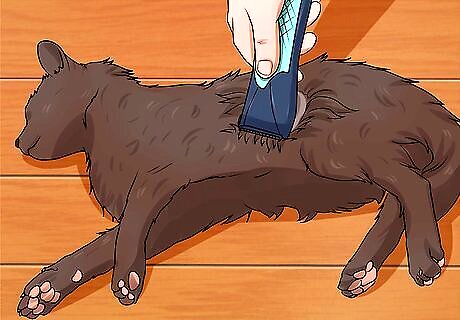
Move your clippers properly. Have your clippers proceed in the direction of the lie of the fur. Aim to skim the clippers over the surface. Avoid applying downward pressure to the clippers as this is more likely to abrade the skin and cause clipper-rash --- a painful condition which causes the cat to lick to try and settle the inflammation and usually causes infection. Shaving against the lie of the fur increases the risk that you will snag your cat's skin.
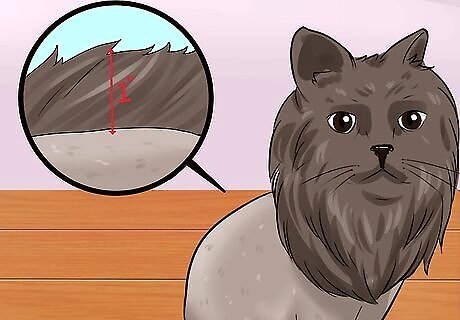
Do not shave too close. To give your cat’s coat enough protection from the sun and cold nights, leave one inch (2.54 cm) of hair. Too close of shaves can result in guard hair being embedded under the skin. This can lead to irregular hair growth and skin problems.
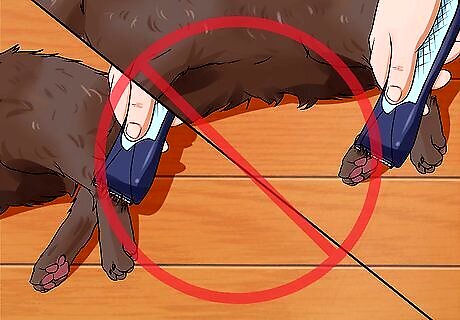
Avoid high risk areas. Do not shave further down the legs and paws where skin, ligaments, and tendons are sensitive to nicking. Do not shave any whiskers (including by the muzzle, above the eyes, and the backside of front paws). If your cat appears particularly agitated while you are shaving near a sensitive area, stop immediately.
Doing a Partial-Body Shave
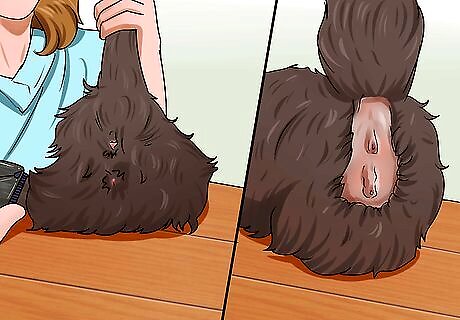
Perform the sanitary or hygiene cut. This cut is appropriate for long hair and overweight cats. The sanitary or hygiene cut is purely functional. It helps keep your cat's fur clear of waste that sticks to him after litter box use. Complete this cut every six weeks. Use a cat clipper with a #10 blade. Hold your cat still. Trim the hair around the anus. Be careful not to nick your cat.

Give your cat a belly shave. Appropriate for long haired cats, the belly shave removes most of the hair underneath your cat. This cut is an extension of the sanitary cut. It makes it easier for your cat to clean himself. A belly shave prevents matting and excessive shedding. You cannot see a belly shave when your cat is walking. Use an appropriate cat fur clipper. Pull the skin taut. Shave under the tail and around the rectum. Shave between the rear legs. Shave up the belly area to the armpits of the front legs.

Try the comb cut. This trim leaves approximately 1/2″ to 1″ (approximately 1 to 2.5 cm) of hair on the cat’s body. You trim the hair short but do not shave it completely. Cats may not have matting for this cut. The comb cut reduces shedding and hairballs. It also makes it easier for you to inspect your cat's body for skin-related issues. Attach a snap-on comb to your clippers. Start clipping behind the ears. Clip your cat's back to the base of its tail. Clip down the shoulders and the sides of your cat. Turn the cat on its side. Clip the cat's belly. Clip the cat's legs.
Doing the Lion Cut
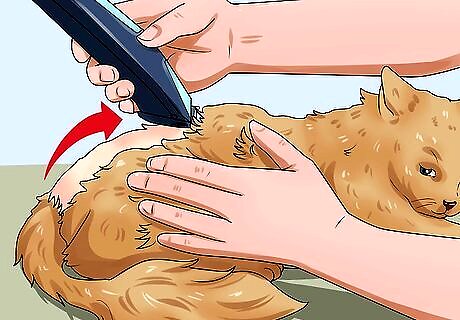
Shave the back. Start near the base of the tail on your cat’s back. Use a #10 blade clipper and shave against the growth of the hair. Shave up the back toward your cat’s head.
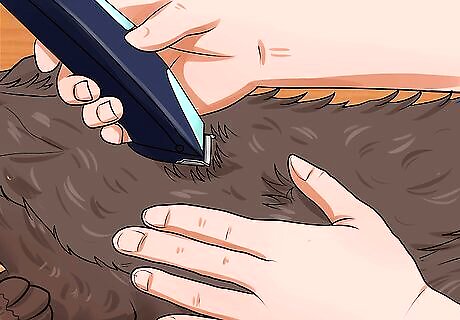
Shave the chest. Work down to your cat’s belly. First, shave with the hair growth so you can remove most of the hair and see better. Then, reverse the clipper’s direction and shave upward to get a smooth finish.
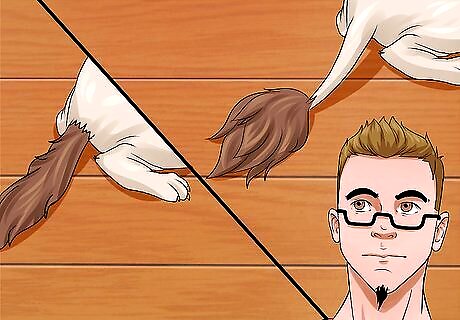
Decide which tail cut you would like. For the lion cut, there are two primary tail cuts: the full tail or the pom-pom tail. The pom-pom tail looks like it has a fluffy ball on the end. The style you choose depends on your personal preferences. Here are steps on how to complete each cut: For a full tail, move the clippers down to the tail’s base to create a line. Reverse the clippers to shave upward and provide a clean finish that will blend into your cat’s back. Shave to the underside of the tail. Keep the line even all the way around. For a pom-pom tail, hold two to three inches (approximately 5 to 7.5 cm) of your cat’s tail in one hand. With the other hand, shave down the tail toward the pom. Use the clipper blade to create a pom line similar to the line created for a full tail. Then reverse the clippers. Shave upwards toward the body. Shave all sides of the tail until the finish is smooth and even.

Shave the front legs and armpits. Fully extend the legs. Pull the loose skin of the armpit taut to prevent nicks or cuts. Shave up and over the elbow approximately one inch. Using the bare line underneath the arm, work toward the front and even up all sides. Again, use the clippers to shave with the growth to create a line. Reverse the clippers then and shave against the growth to smoothen the finish and define the line.
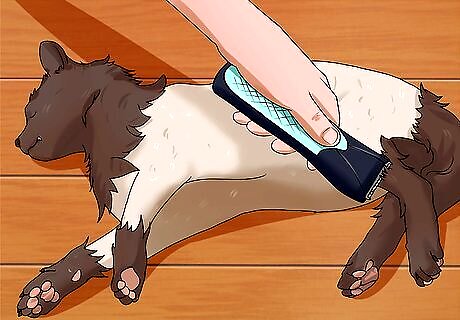
Shave the rear legs. First, extend the rear legs. Shave downward to remove the bulk of hair and gain visibility. Next, shave upwards against the growth. Shave until just above your cat’s ankle joint.
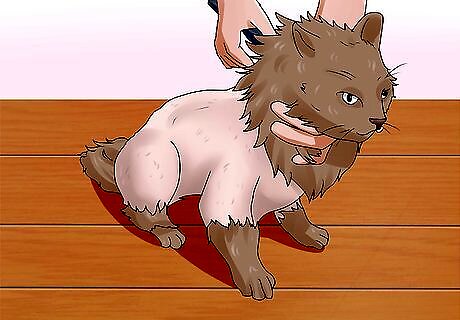
Groom the neckline. Pull the ruff forward and start shaving at the back of the neck. Pull the skin taut and back. Work forward with the clippers against the growth. Imagine your cat is wearing a collar. Use the natural collar line as the guide. Once the lines become even at the back of the neck, move to the front of the cat's chin. Shave upward to her natural collar line. Then work around both sides of the neck to blend the front and back lines together, keeping with the natural collar line.
Performing Post-Shave Care

Bathe your cat. After you finish these steps, give your cat a degreasing bath. Use a shampoo appropriate for cats. You can purchase these shampoos online or at your local pet store. If your cat has sensitive skin, your vet might have a shampoo recommendation. Follow these steps: Place a rubber bath mat in a sink or tub to provide secure footing for your cat. Fill the tub with three to four inches of lukewarm water. Place your cat in the tub. Use a spray hose to thoroughly wet your cat. Do not spray her directly in her ears, eyes, or nose. A large plastic pitcher or unbreakable cup will work in lieu of a spray hose. Gently massage your cat with shampoo. Work from head to tail. Thoroughly rinse your cat with the spray hose. Avoid the ears, eyes, and nose again. Dry your cat with a large towel.
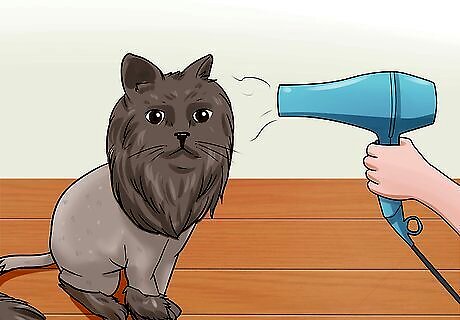
Blow dry. After you have bathed your cat, blow dry her. Use the "cool" setting so that you do not harm her skin. Smooth any rough spots on her hair. Make sure the hair is well-blended and very smooth.
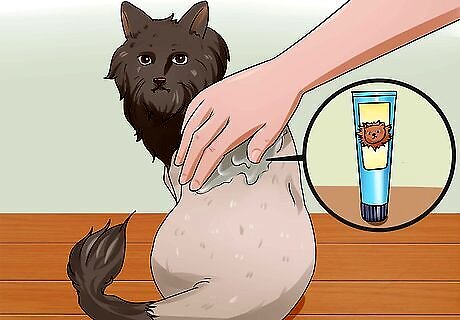
Apply sunscreen. Your cat’s fur helps prevent skin cancer by blocking harmful UV rays. When you shave your cat, he loses some of that protection. Be sure to apply pet-specific sunscreen to prevent sunburn and skin cancer. You can purchase sunscreen online at retailers like Amazon or in your local pet shops.















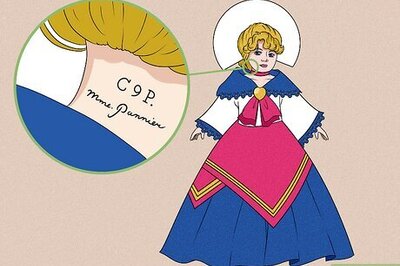
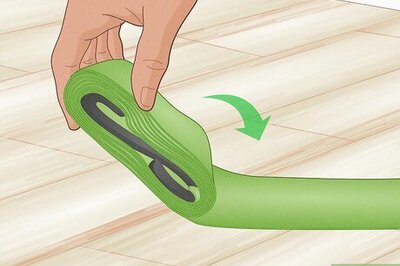


Comments
0 comment